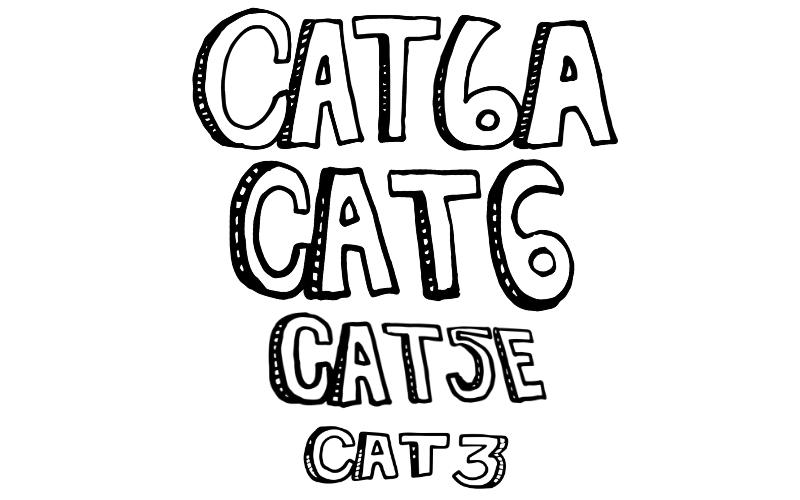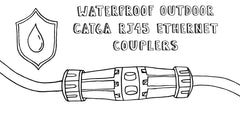Payment methods accepted

Evolution of Category Cables: Cat5e vs. Cat6
Written by Don Schultz, trueCABLE Senior Technical Advisor, Fluke Networks Copper/Fiber CCTT, BICSI INST1, INSTC, INSTF Certified
Most of us have grown accustomed to always-on access to the internet. But, as you know, there’s a hardware infrastructure in place that keeps all of that data flowing. One of the essential components is cables — something you probably don’t think much about until you’re upgrading your network or renovating your office. Let’s explore the evolution of category cables like Cat5e and Cat6 to understand how modern networking is made possible.
Cat Cable Basics
Category cables, also known as Ethernet Cat cables, play an important role in any connected ecosystem. Ethernet category cables are those twisted pair wires used for Ethernet networking. Most users will use twisted pair cables with four pairs that are blue, green, orange and brown. But bigger Ethernet cables are also available, up to 100 pairs for backbone operations.
Not all network category cables are created equal. They come in different flavors that reflect their overall functionality. When it’s time to invest in category cables, you’ll want to compare price, speed, frequency and overall performance in order to determine which type of category cable will best meet your needs. These days, the industry standards are Cat5E, Cat6 and Cat6A. But what’s the difference? The distinctions lie in the evolution of category cables.
The Pros and Cons of Each Cable
For one thing, Cat6 and 6A cables are more rigid compared with their 5E cousins. An internal spline used in the Cat6 and 6A design separates each of the twisted pairs in the cable. While that may not seem like a big deal, it is. The spline helps to reduce cross-talk and interference between the copper conductors.
Another benefit of Cat6 is that it supports much faster data throughput. Cat5e cables support 1 Gigabit Per Second (Gbps) at 100 MHz. While that’s usually plenty of bandwidth for most home and small business users today, Internet service providers are working to increase data delivery speeds. Cat6 can support 10 Gbps speeds at 250 MHz.
Cat5E cables can handle runs of up to 328 feet. Cat6 cables only operate at maximum capacity for up to 164 feet, after which they are less efficient. But, don’t worry — Cat6A cables can maintain full speeds of 10 Gbps for up to 328 feet.
Choosing the Right Cable
If you’re just replacing a few cables or making minor upgrades, Cat5E may make sense. You can mix the three types of cables in the same network. All of them use the standard RJ45 connectors that plug into any Ethernet jack.
The bottom line is that is if you want to economize, Cat5E cables are a bit more budget-friendly. While Cat6 and 6A cables are typically 10 percent to 20 percent more expensive than Cat5E, that premium price comes with significantly better performance. Investing a few extra bucks in Cat6 or 6A is a way to future-proof your network so that it can take advantage of faster data flows.
Check out our complete collection of networking cables.
trueCABLE presents the information on our website, including the “Cable Academy” blog and live chat support, as a service to our customers and other visitors to our website subject to our website terms and conditions. While the information on this website is about data networking and electrical issues, it is not professional advice and any reliance on such material is at your own risk.


































